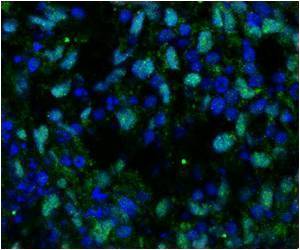The location and general characteristics of taste stem cells on the tongue have been discovered by scientists.

Taste cells are located in clusters called taste buds, which in turn are found in papillae, the raised bumps visible on the tongue's surface.
Two types of taste cells contain chemical receptors that initiate perception of sweet, bitter, umami, salty, and sour taste qualities. A third type appears to serve as a supporting cell.
A remarkable characteristic of these sensory cells is that they regularly regenerate. All three taste cell types undergo frequent turnover, with an average lifespan of 10-16 days. As such, new taste cells must constantly be regenerated to replace cells that have died.
For decades, taste scientists have attempted to identify the stem or progenitor cells that spawn the different taste receptor cells. The elusive challenge also sought to establish whether one or several progenitors are involved and where they are located, whether in or near the taste bud.
Drawing on the strong physiological relationship between oral taste cells and endocrine (hormone producing) cells in the intestine, the Monell team used a marker for intestinal stem cells to probe for stem cells in taste tissue on the tongue.
Advertisements
The Monell scientists hypothesize that the two levels of expression could indicate two different populations of cells. The cells that more strongly express Lgr5 could be true taste stem cells, whereas those with weaker expression could represent those stem cells that have begun the transformation into functional taste cells.
Advertisements
The findings are published online in the journal Stem Cells.
"This is just the tip of the iceberg," said senior author Peihua Jiang, Ph.D., also a Monell molecular neurobiologist. "Identification of these cells opens up a whole new area for studying taste cell renewal, and contributes to stem cell biology in general."
Future studies will focus on identifying the factors that program the Lgr5-expressing cells to differentiate into the different taste cell types, and explore how to grow these cells in culture, thus providing a renewable source of taste receptor cells for research and perhaps even clinical use.
Source-Eurekalert













